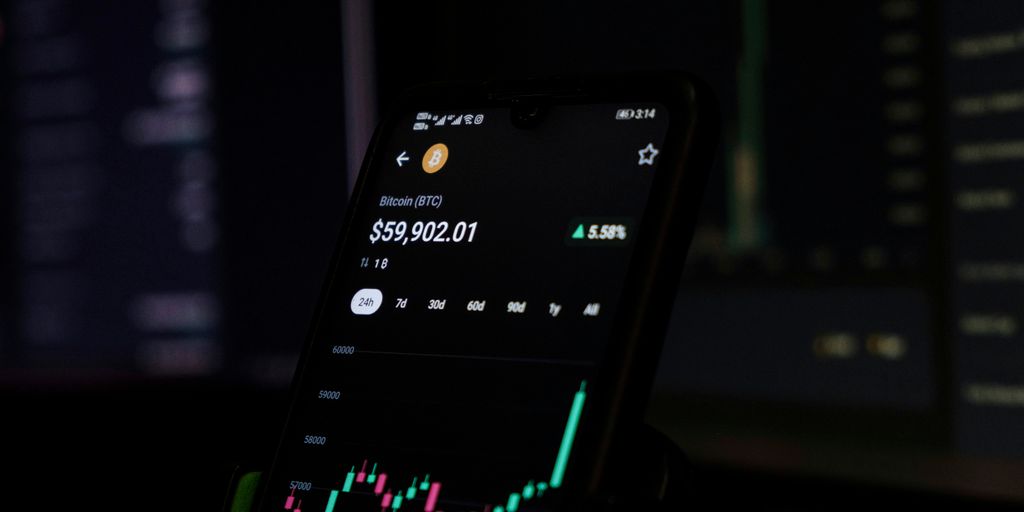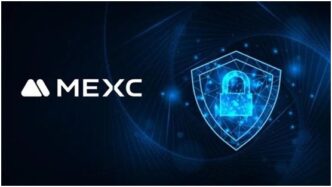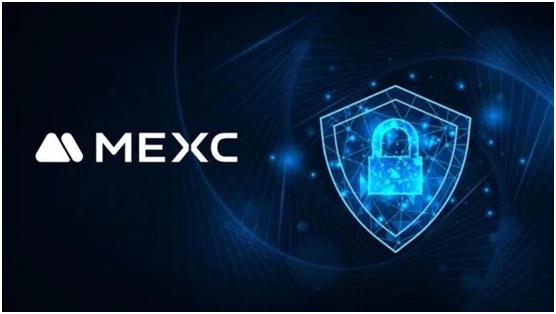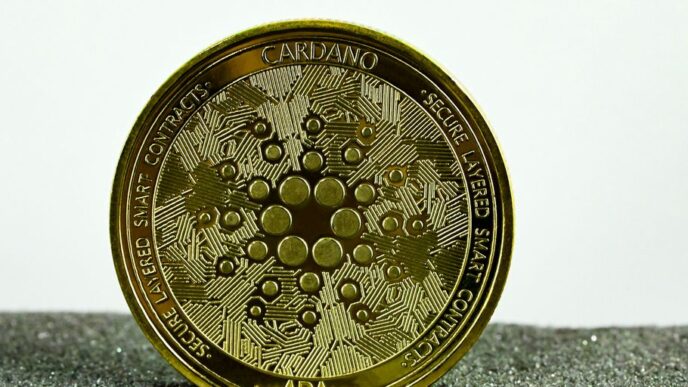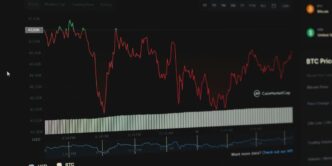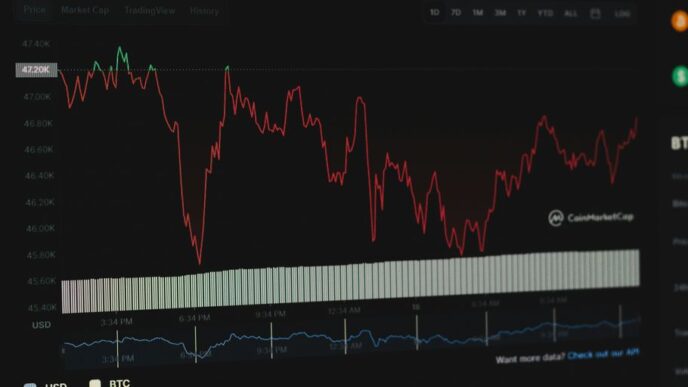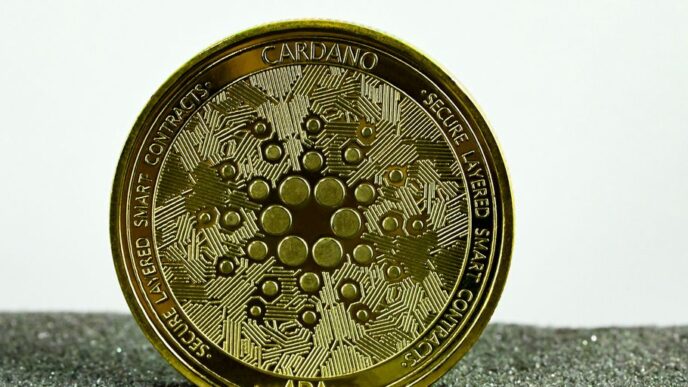I don’t know about you, but finding the best place to buy crypto in 2025 felt like a wild goose chase. Every platform talks up low fees and top security, yet the fine print often hides extra costs. I spent hours poking around fee schedules, testing sign-up flows, and comparing mobile apps. This guide lays out what really matters so you can pick the best place to buy crypto without losing your mind.
Key Takeaways
- Compare platforms by breaking down trading fees, spreads, and hidden charges
- Look for strong security like two-factor login, cold storage, and insurance
- Choose payment methods you use most—bank transfers, cards, or digital wallets
- Test both desktop sites and mobile apps for ease of use and reliable performance
- Check for extra perks: charting tools, automated orders, portfolio tracking, and support
Essential Criteria For Finding The Best Place To Buy Crypto

Choosing where to buy crypto can feel overwhelming, especially with so many platforms popping up. It’s not just about finding the cheapest option; it’s about finding a platform that fits your needs and keeps your assets safe. Let’s break down the key things to consider.
Assessing Fee Transparency And Competitiveness
Understanding the fee structure is super important. You don’t want to be hit with surprise charges that eat into your profits. Look for platforms that clearly outline all their fees, including trading commissions, deposit/withdrawal fees, and any other charges. Compare these fees across different exchanges to see who offers the best deal. Some platforms might have lower trading fees but higher withdrawal fees, so it’s all about finding the right balance for your trading style. For example, if you plan to make frequent, small trades, low trading commissions are key. If you’re buying and holding, withdrawal fees might be more important. Also, keep an eye out for tiered fee structures, where fees decrease as your trading volume increases. This can be beneficial if you’re a high-volume trader.
Evaluating Security And Insurance Protections
Security should be a top priority. Crypto exchanges are targets for hackers, so you need to make sure your chosen platform has robust security measures in place. Look for things like two-factor authentication (2FA), cold storage of funds, and insurance coverage in case of a security breach. Two-factor authentication adds an extra layer of security by requiring a code from your phone in addition to your password. Cold storage means that the majority of the exchange’s funds are stored offline, making them much harder for hackers to access. Insurance coverage can help protect you in the event that the exchange is hacked and you lose your funds. It’s also a good idea to research the exchange’s security history. Has it been hacked before? What steps did it take to improve its security after the incident? A good place to start is to check if the platform offers crypto wallet options.
Reviewing Cryptocurrency Selection And Diversity
Consider which cryptocurrencies you want to buy. Some platforms only offer a limited selection of the major coins like Bitcoin and Ethereum, while others offer a wider variety of altcoins. If you’re interested in investing in smaller, more obscure coins, you’ll need to choose a platform that supports them. However, keep in mind that smaller coins are often riskier than the major coins, so do your research before investing. Also, consider the availability of crypto trading pairs. Can you trade your desired coins directly against each other, or will you need to convert them to Bitcoin or Ethereum first? The more trading pairs available, the more flexibility you’ll have.
Analyzing User Interface And Onboarding
The user interface can make or break your trading experience. A clunky, confusing interface can make it difficult to buy and sell crypto, while a clean, intuitive interface can make the process much easier. Look for platforms that are easy to navigate and understand, even if you’re a beginner. Also, consider the onboarding process. How easy is it to create an account and get verified? Some platforms have a lengthy and complicated verification process, while others are much quicker and simpler. A smooth onboarding process can save you a lot of time and frustration. The best crypto exchanges will have a simple interface.
Comparing Fee Structures Across Top Crypto Platforms
It’s 2025, and the crypto landscape is still wild. One thing that hasn’t changed? Fees can eat into your profits if you’re not careful. Let’s break down how different platforms charge you to trade.
Trading Commissions And Spread Analysis
Trading fees are probably the first thing you think about. Some platforms advertise "zero commission," but don’t be fooled! They often make money on the spread – the difference between the buy and sell price. A wide spread means you’re paying more than you think. Other platforms use a maker-taker model, where you pay different fees depending on whether you’re adding liquidity to the order book (maker) or taking it away (taker). Here’s a quick comparison:
| Platform | Maker Fee | Taker Fee | Other Notes |
|---|---|---|---|
| Exchange A | 0.10% | 0.15% | Discounts for high-volume traders |
| Exchange B | 0.05% | 0.20% | Higher fees for smaller trades |
| Exchange C | 0.25% | 0.25% | Simple fee structure, no volume discounts |
Always check the fine print to understand how fees are calculated. Some platforms also have tiered fee structures based on your trading volume – the more you trade, the lower your fees.
Deposit And Withdrawal Charges
Don’t forget about deposit and withdrawal fees! These can really add up, especially if you’re moving crypto around a lot. Some platforms charge a flat fee, while others charge a percentage of the transaction. Here’s what I’ve seen:
- Bank Transfers: Often the cheapest option, but can take a few days.
- Credit/Debit Cards: Convenient, but usually come with higher fees.
- Crypto Transfers: Fees vary depending on the network and the platform.
It’s worth checking if your platform covers deposit fees for certain methods, or if they waive withdrawal fees after a certain amount of trading activity. Every little bit helps!
Subscription And Premium Service Costs
Some platforms offer subscription services or premium tiers that come with extra perks, like lower fees, advanced trading tools, or dedicated customer support. These can be worth it if you’re a serious trader, but make sure you do the math to see if the benefits outweigh the costs. For example, a premium subscription might cost $50 a month but reduce your trading fees by 0.05%. You’d need to trade a significant amount to make that worthwhile. Also, watch out for hidden costs or unexpected charges. Transparency is key!
Security Measures On Leading Crypto Exchanges
It’s no secret that security is a HUGE deal when you’re dealing with crypto. You’re trusting these platforms with your money, so you need to know they’re taking it seriously. Let’s break down some of the key things to look for.
Two-Factor Authentication And Biometric Options
Okay, so first up, two-factor authentication (2FA) is non-negotiable. If a platform doesn’t offer it, run. Seriously. 2FA means that even if someone gets your password, they still need a second code from your phone or another device to get in. It’s like having a deadbolt on top of your regular lock. Some platforms are even stepping it up with biometric options like fingerprint or facial recognition. This adds another layer of protection, making it way harder for anyone to access your account without your actual, physical presence. It’s all about making it as difficult as possible for hackers to get in.
Cold Storage And Custodial Best Practices
Where your crypto is stored matters a lot. Think of it like this: keeping all your cash in your wallet is risky, right? Same with crypto. That’s where cold storage comes in. Cold storage means keeping a large chunk of the crypto offline, away from the internet, where hackers can’t get to it. It’s like putting your valuables in a safe deposit box. Now, custodial practices are all about how the exchange manages your crypto. Are they using secure wallets? Do they have procedures in place to prevent internal theft? These are important questions to ask. Some exchanges even offer insurance if they mess up and lose your funds, which is a nice security feature.
Regulatory Compliance And Insurance Coverage
This is where things get a little complicated, but it’s super important. Crypto exchanges aren’t always regulated the same way as traditional financial institutions, but that’s changing. Look for exchanges that are actively working to comply with regulations in their operating jurisdictions. This shows they’re serious about playing by the rules and protecting their users. Insurance coverage is another big one. Some exchanges offer insurance to protect against losses from hacks or other security breaches. It’s like having a safety net in case something goes wrong. Just remember to read the fine print and understand what the insurance actually covers. It’s all about finding an exchange that’s both compliant and has your back if things go south.
Payment Options For Seamless Crypto Purchases
Okay, so you’re ready to buy some crypto. Awesome! But how do you actually pay for it? It’s not like you can just hand over a pile of cash (well, you could with some P2P setups, but let’s stick to the main options). The good news is that most platforms offer a bunch of ways to get your money in and your crypto out. Let’s break down the most common ones.
Bank Transfers And Automated Clearing Houses
Good old bank transfers are usually the cheapest way to fund your crypto account. ACH transfers, in particular, are often free or have very low fees. The downside? They can take a few days to clear. It’s not instant gratification, but if you’re not in a rush, it’s a solid choice. Just make sure your exchange supports ACH and that you’ve properly linked your bank account. It’s also worth noting that some banks might charge their own fees for outgoing transfers, so double-check with your bank to avoid any surprises.
Credit And Debit Card Transactions
Want to buy crypto right now? Credit and debit cards are your go-to. They’re super convenient and the transaction is usually instant. The catch? Fees. They’re almost always higher than bank transfers. Think of it as paying a premium for the speed and convenience. Also, be aware that some card issuers might treat crypto purchases as cash advances, which come with even higher fees and interest rates. So, use this option wisely, and maybe not for huge amounts. It’s great for smaller, quicker buys, though. If you are looking to convert crypto to Visa gift cards, this might be a good option.
Alternative Methods Like PayPal And Stablecoins
More and more platforms are adding alternative payment methods. PayPal is a big one – it’s fast and secure, but again, expect fees. Stablecoins are another interesting option. You can buy stablecoins (like USDT or USDC) with traditional currency and then use those stablecoins to buy other cryptocurrencies on the exchange. This can sometimes help you avoid certain fees or take advantage of trading opportunities. Plus, some platforms even let you earn interest on your stablecoin holdings. Here’s a quick rundown:
- PayPal: Fast, convenient, but higher fees.
- Stablecoins: Can reduce fees, earn interest, but requires an extra step.
- Other e-wallets: Skrill, Neteller, etc. Availability varies by platform.
It’s all about finding the balance between cost, speed, and convenience that works best for you. Don’t just jump in without looking at the fees – they can really add up!
User Experience: Desktop Versus Mobile Trading
Choosing how you interact with a crypto platform is a big deal. Do you want the expansive view of a desktop, or the on-the-go convenience of mobile? Both have their strengths, and the best choice really depends on your trading style and needs. I remember when I first started, I was glued to my desktop, but now I mostly use my phone. Times change!
Interface Customization And Ease Of Use
Desktop platforms usually win when it comes to customization. You’ve got more screen real estate to play with, meaning you can arrange charts, order books, and news feeds exactly how you like them. Mobile apps, on the other hand, often prioritize simplicity. They’re designed to be easy to use on a smaller screen, which can mean less clutter but also fewer options. It’s a trade-off between power and portability. I find that desktop interfaces are better for in-depth analysis, while mobile apps are great for quick checks and trades. For example, I can set up a custom crypto wallet on my desktop, but I can only monitor it on my phone.
Mobile App Stability And Feature Parity
In the early days of crypto, mobile apps were often stripped-down versions of their desktop counterparts. These days, the best platforms have made huge strides in feature parity. You can often do almost everything on the app that you can do on the desktop, including advanced order types and charting. However, stability can still be an issue. Mobile apps are more prone to crashes and glitches, especially on older devices. Plus, you’re relying on your mobile data connection, which isn’t always reliable. I’ve definitely missed out on trades because my app froze at the wrong moment. Here’s a quick comparison:
| Feature | Desktop | Mobile |
|---|---|---|
| Customization | High | Medium |
| Feature Set | Comprehensive | Mostly Comprehensive |
| Stability | Generally High | Varies, can be lower |
| Portability | Low | High |
| Screen Size | Large | Small |
Notification And Account Management Tools
Both desktop and mobile platforms offer notification and account management tools, but they work a little differently. Desktop platforms might send you email alerts or pop-up notifications, while mobile apps can use push notifications to keep you updated even when the app isn’t open. Mobile notifications are generally more immediate and convenient, which is great for reacting quickly to market movements. Account management is usually easier on a desktop, where you can view all your holdings and transaction history on one screen. But mobile apps are catching up, with many now offering detailed account summaries and reporting features. I like getting price alerts on my phone, but I still prefer to do my taxes on my computer.
Advanced Trading Features And Analytical Tools

Okay, so you’re not just buying and holding. You want to trade trade. That means you need more than just a place to buy crypto; you need tools. Let’s look at what the top platforms are offering in 2025.
Real-Time Charting With Technical Indicators
Real-time charting is non-negotiable. You need to see what’s happening now, not five minutes ago. But it’s not just about the price line; it’s about the indicators. Does the platform offer moving averages? RSI? Fibonacci retracements? The more, the better, honestly. I like to use a combination of indicators to get a better sense of market analysis and potential trade setups. Some platforms even let you customize your charts, which is a huge plus.
Automated Orders And Algorithmic Strategies
This is where things get interesting. Automated orders, like stop-loss and take-profit orders, are pretty standard now. But some platforms are going further, letting you create or use algorithmic strategies. Basically, you can set up rules for the platform to automatically execute trades based on certain conditions. It’s like having a robot trader, but you still need to understand what you’re doing. Here’s a quick look at some common order types:
| Order Type | Description |
|---|---|
| Market Order | Buys or sells immediately at the best available price. |
| Limit Order | Buys or sells only at a specified price or better. |
| Stop-Loss Order | Sells when the price reaches a certain level to limit losses. |
| Take-Profit Order | Sells when the price reaches a certain level to secure profits. |
| OCO Order | One-Cancels-the-Other. A pair of orders where if one executes, the other is automatically canceled. |
Portfolio Tracking And Tax Reporting Integration
Tracking your crypto portfolio can be a pain, especially if you’re using multiple exchanges. The best platforms offer built-in portfolio tracking, so you can see your overall performance at a glance. Even better if they integrate with tax reporting software. Trust me, you’ll thank yourself when it’s time to file your taxes. Nobody wants to manually calculate crypto gains and losses. Here are some features I look for:
- Real-time portfolio valuation
- Profit/loss tracking
- Transaction history
- Tax reporting integration
Customer Support And Community Engagement
When you’re dealing with crypto, things can get confusing fast. That’s why solid customer support is a must-have. And a good community can be a lifesaver when you’re trying to figure things out. Let’s look at what to look for.
Multi-Channel Support And Response Times
Okay, so you’ve got a problem. How can you get help? The best platforms offer multi-channel support. Think email, live chat, maybe even phone support. But it’s not just how you can contact them, it’s how fast they respond. Nobody wants to wait days for an answer when something goes wrong. Here’s a quick look at what response times you might expect:
| Support Channel | Average Response Time |
|---|---|
| Live Chat | Under 5 minutes |
| 12-24 hours | |
| Phone | Immediate (if available) |
Fast response times are a sign that the platform values its users.
Educational Guides Webinars And Tutorials
Crypto is complicated. Platforms that provide educational resources are worth their weight in Bitcoin. Look for:
- Beginner’s guides that explain the basics.
- Webinars that cover more advanced topics.
- Tutorials that walk you through specific tasks, like making a trade or setting up a wallet.
- Glossaries of terms.
Active Forums And Social Media Networks
Don’t underestimate the power of community. Active forums and social media groups can be goldmines of information. You can ask questions, share tips, and learn from other users’ experiences. Plus, it’s a good way to gauge the overall sentiment towards a platform. If everyone is complaining about the same issue, that’s a red flag. Look for platforms that actively engage with their community and respond to concerns. A strong community can help you navigate the complex world of crypto trading.
## Conclusion
Alright, that wraps up our tour of the top spots to buy crypto in 2025. We’ve covered fees, ease of use, and coin choices, but really, it comes down to what fits your style. If you just want to buy and hold, a simple app with a few big names might work. If you plan to trade more, look for low fees and good chart tools. And don’t forget security—pick a platform that’s proven it can keep your coins safe. Try a small test buy first and see how it feels. After that, you’ll learn more by doing than by reading another list. Good luck out there, and happy trading!
Frequently Asked Questions
What’s the cheapest way to buy crypto in 2025?
Using a platform with low trading fees and free bank transfers usually costs the least. Compare fee rates before you sign up. Some apps even waive fees if you use their native tokens.
How do I pick a safe crypto platform?
Look for exchanges that offer two-factor authentication and keep most coins in cold storage. Check if they follow the rules in your country. Reading user reviews can also help you spot red flags.
Can I use a credit or debit card to buy crypto?
Yes. Most big exchanges let you buy with a card. But card fees tend to be higher than bank transfers, so watch out for extra costs.
Do I have to pay a fee every time I trade crypto?
Usually, yes. Most exchanges charge a small fee on each buy or sell order. Some platforms offer fee discounts if you trade larger amounts or hold their token.
How do I keep my crypto safe after buying it?
Move your coins to a secure wallet if you don’t plan to trade them soon. Hardware wallets and apps with private key control are the safest. Always back up your recovery phrase in a safe spot.
Which crypto app is best for beginners in 2025?
Look for an app with a simple layout and clear guides. Many new users like platforms that show quick tutorials and let you set up in minutes. A good pick also offers demo accounts to practice risk-free.


